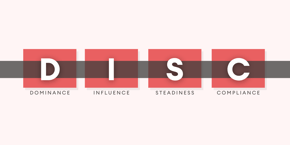What is a sales pipeline? It may seem like a simple question to answer but, in truth, it’s more complicated than you think – a lot more.
Definition: ‘The sales pipeline represents your sales process consisting of all the sales steps you need to take in order to sell your product to your customer.’
A sales pipeline can become complicated because of the many sales steps involved, the varying needs of a prospect, timelines and the ever-changing probability of closing.
Sales steps in your sales pipeline
Chances are that you’re already using a sales pipeline to guide your contacts through to a sale. As your contact progresses through the sales pipeline they require more attention as they are progressing from simply being a contact to an opportunity and then, hopefully, onto a sale.
Having too many stages in your sales pipeline is counter-productive as it’s time-consuming, difficult to manage and opportunities can be missed.
Too few, though, and the sales cycle is overly fast and feels too urgent, giving salespeople their ‘pushy’ stereotype (which nobody wants!).
Based on this, the optimum number of steps in your sales pipeline should be 5 or 6.
A 6 step sales pipeline usually includes the following:
- Initial contact
- Someone has shown interest in your business from either a phone call or a form completion on your website.
- Marketing qualification
- The prospect has shown enough interest in your business and is within your target market, so can be passed on to sales for further qualification.
- Sales qualification
- There is definitely a need for your product or service, your product or service is a fit for their company and would like to meet to discuss in more detail.
- Meeting
- Outline all the capabilities of your product or service for the prospect and work to solve their challenges; discuss the finer details including pricing, implementation and quantity.
- Proposal/order form
- Send the prospect a proposal outlining why you’re the full package and why it’s good value. This stage is where you can get the best indication for their probability of closing.
- Closed sale
- The prospect has signed your order form and has become a customer. Usually they will be passed over to an Account Manager or the support team from this point, but checking back in every now and again is always a good idea to show you care about whether they’re happy or not; think about cross, up and switch-sell opportunities when you do.
Why should you care about steps in your sales pipeline?
The main reason you should care about your pipeline is that doing so will see you take more money home in your pay packet.
It’s that simple.
The best way to make the most of your sales pipeline is to score each step. It doesn’t take long but can make it incredibly easy to manage your sales opportunities.
How does scoring a sales pipeline work?
Each step in your sales pipeline will be weighted differently. This usually consists of a value or the probability of closing the prospect into a paying customer. A scored sales pipeline gives you an excellent indication into what your sales performance will be for the current month and the next and where you should spend the majority of your time.
On average a prospect who is sent a proposal will be 60% likely to become a customer. If yours is lower, then maybe you need to overhaul your follow-up procedure.
A typical sales pipeline will look like this:
- Initial contact – 0%
- Marketing/sales qualification – 10%
- Meeting – 30%
- Proposal/order form – 60%
- Closed sale – 100%
Once a contact enters your sales pipeline, they become an opportunity.
As a general rule of thumb, you should have 3 times more active opportunities in your sales pipeline than your actual sales target.
But for an opportunity to successfully progress through your sales pipeline you’ll first have to complete a set of actions at each stage. This could be follow-up calls, sharing marketing collateral or delivering a product demonstration.
It’s also important to not just focus on the end of your sales pipeline. Yes, this will help you hit this month’s quota, but what about next month or the month after that?
Sales guru S. Anthony Iannarino states, “It’s an enormous mistake to stop prospecting because your pipeline is healthy right now.”
To keep your sales consistent, you need to focus some of your time at the start of your sales pipeline to ensure a steady flow of opportunities are entering it.
Top tips for a successful sales pipeline
- Automate what you can, such as follow-up reminders.
- Define your stages clearly so you can associate sales activities with them easily.
- Take your time with the sale as all prospects buy at varying times.
- Estimate your close date so that you can better forecast against your targets.
- Capture as much information about the prospect as you can; the more you know about them, the better service you can offer them.
- Use technology such as CRM, marketing automation or Business Intelligence to save time and manage your sales pipeline easier.
- Analyze every step to see where you can make improvements and increase conversion.
A sales pipeline will constantly shift with conversion rates fluctuating, differing prospects and even outside influences such as the marketplace or time of the year. So whether you’re new to sales or a seasoned veteran, sticking to the tips listed above can help you build a successful pipeline.



